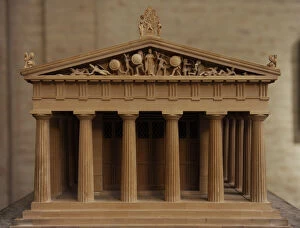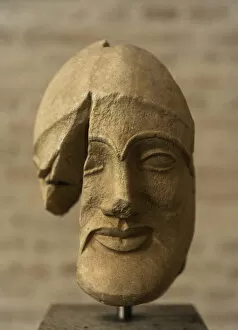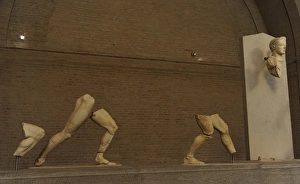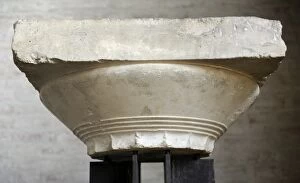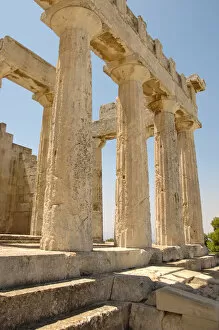Aphaia Collection
Aphaia, the ancient Greek goddess of fertility and agriculture, was worshipped at the Temple in Aigina, Greece
All Professionally Made to Order for Quick Shipping
Aphaia, the ancient Greek goddess of fertility and agriculture, was worshipped at the Temple in Aigina, Greece. This temple, built in the 6th century BC, is a testament to the skill and artistry of ancient Greek architecture. The temple's pediments are adorned with intricate sculptures that depict various mythological scenes. The West Pediment showcases a 19th-century reconstruction depicting the battle between Greeks and Trojans. The East Pediment features a group of figures including the head of a Trojan helper, an enigmatic sphinx, and an archer. These sculptures were originally created around 490 BC and have since been admired for their exquisite craftsmanship. One particularly striking sculpture is that of Paris as an archer - its detailed reconstruction gives us insight into how it might have looked centuries ago. A model of the Temple allows visitors to envision its grandeur during its prime. Its central coronation on the west pediment is especially captivating; it portrays gods bestowing blessings upon mortals. The shield displayed within this sacred space belonged to a Trojan warrior - it serves as a reminder of both war and heroism intertwined with religious worship. Even today, remnants such as Doric capitals from the cella can be found on Aegina Island. These architectural elements stand as silent witnesses to Aphaia's enduring influence throughout history. Visiting this site transports you back in time to when ancient Greeks sought divine favor through offerings and prayers at this magnificent temple dedicated to their beloved goddess.





